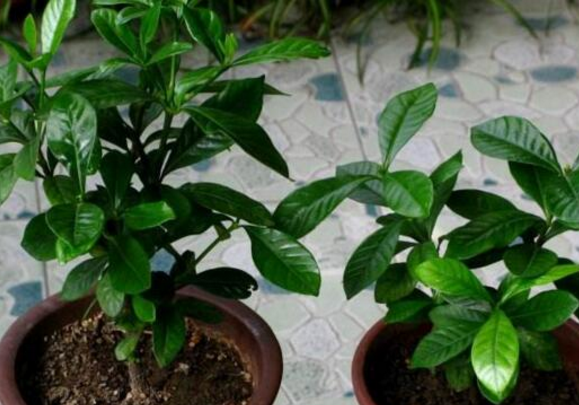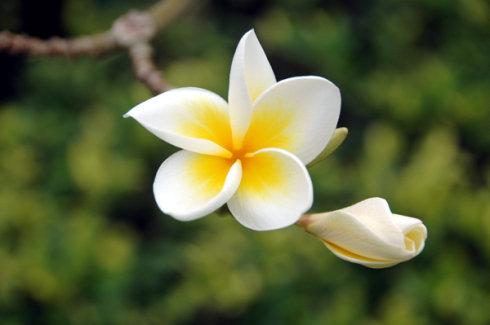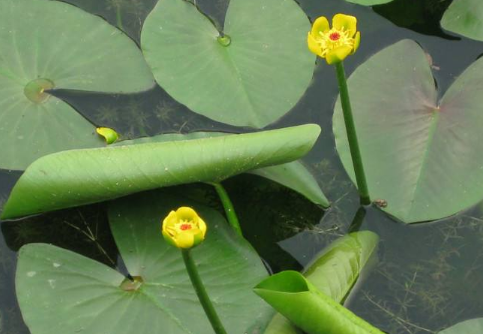Cutting method of Gardenia jasmine
Cutting time of Gardenia
The cutting time of gardenia is usually in the middle of April, when the temperature is very suitable for the rooting of gardenia, which can be carried out at other times, such as June, August, October and November, but the survival rate will be greatly reduced because the temperature is not well controlled.

The specific methods of cutting:
1. Soil insertion
Plants ready to be cut:
The plants with good growth and no diseases and insect pests were selected as the cutting material. Then disinfect it with potassium permanganate solution, generally soak for half an hour, and then put it in a ventilated place to dry.
Potted soil preparation:
Gardenia likes acidic soil, so when preparing soil, it is necessary to prepare loose, fertile, draining and breathable acidic soil with PH value of 4.0-6.5, which is very important for gardenia root. Flowerpots generally need to use ceramic pots with good air permeability.
Into the basin:
Insert the prepared branches into the basin soil, the depth is generally 3-4cm, then pour thoroughly with water, keep the basin soil moist in a place with sufficient ventilation and scattered light, generally take root in about half a month, and then enter the daily maintenance.
2. Water plug
Water insertion is far better than soil insertion, with a survival rate of nearly 100% from April to July. Cut cuttings retain only the top 2 leaves and terminal buds in containers filled with clear water, often change water to avoid incision decay, and begin to take root after 3 weeks.
If you are interested, try it at home. You can get a large pot of gardenia by cutting off a branch from another flower friend's house.
Cutting method of Gardenia jasminoides and cutting propagation technique of Gardenia jasminoides
Gardenia leaves bright green, evergreen four seasons, flowers large white, fragrant, but also has a certain shade resistance and anti-toxic gas ability. It is very suitable for balcony greening, potted flowers, cut flowers or bonsai.
Gardenia jasminoides is suitable for growing in soil with loose and deep, good aeration and water retention and pH value from 5.5 to 6.5. Disinfect the soil before cutting, spray the soil with 50% carbendazim wettable powder 0.125% solution, and then cover the soil with plastic film for 3 to 4 days. After removing the film for 1 week, it can be used after the medicine gas is volatilized. The acidity of conifer humus soil in the south can also be disinfected with lime powder.
Optimal cutting time of Gardenia jasminoides cutting method
In mid-April, the survival rate is the highest, and the temperature is the most suitable for other times: June, August, October and November, but you need to have a better grasp of the temperature.
Cutting soil: it is necessary to disinfect the soil before growing in the soil with loose and deep soil, good aeration and water retention and pH value of 5.5 to 6.5.
Cutting steps of Gardenia jasminoides
1. Branch selection: 1-2-year-old branches with strong growth, full Lignification and no diseases and insect pests are used as cuttings.
2. Cuttings treatment: cut the branches into cuttings 10 cm to 15 cm long, leaving only the upper 3 to 4 leaves. Cut the upper cut into a flat cut and the lower cut into an oblique cut, so as to increase its contact surface with the soil and facilitate the absorption of water. The upper incision is 1 cm to 2 cm away from the bud, and the lower incision is 0.5 cm away from the bud. The incision should be smooth to prevent splitting.
3. The cuttings can be soaked in rooting solution.
4. When cutting into the soil prepared in advance, it is best to cut and cut without drying the wound.
5. After the cuttage is finished, it can be watered once, and it can take root in about 30-40 days.
Cutting method of Gardenia jasmine
The cutting propagation of gardenia is usually from April to May, but it can also be propagated in the greenhouse from October to November. 1Mel can take root in 2 months after cuttage. In Shanghai, most of the cuttings are cut in the rainy season, and the survival rate is as high as 85% and 90%. Higher survival rate can also be obtained by green cutting between summer and autumn.
Gardenia jasminoides, in addition to sand and soil, can also be inserted with water. The time of water insertion is better in summer, or between summer and autumn. Other times: June, August, October, November is fine, but you need to have a better grasp of the temperature
A, cuttings
The 1-2-year-old robust branches of Gardenia jasminoides were cut, and the length of the branches was 10 ~ 12 cm. The basal leaves were removed, leaving only 4 leaves in the upper 3 Mel. After the cuttings are corrected, the cuttings are treated in the following ways:
(1) Vitamin treatment
Dip the base of the trimmed branch into the original solution of vitamin B12 injection, then suck the solution into the cuttings for about 1 minute, dry it slightly, and then cut it in the cutter.
(2) auxin treatment
It was treated with indole acetic acid in summer, and its concentration was 25-50ppm. The base of the cuttings was invaded into the solution for 24 hours, and after the solution was inhaled, the cuttings could be cut.
B, slotting machine
The cutter can use coarse sand as the matrix, and the cuttings can be insulated and moisturized by plastic shed. At the temperature of 20 ℃, the relative humidity is more than 85%, and it can take root in about 40 days. In addition to sand insertion, sandy soil can also be inserted. In addition, there are two kinds of water cutting methods that use water as cutting substrate.
1. Water tank insert
In some places in the south, water tank cuttings are used for propagation. Generally use Reed or bamboo to weave a round basket or box, put the gardenia cuttings at the bottom of the basket and float on the surface of the pond, the cuttage survival rate is very high.
two。 Bottle water insert
Bottle can be used in North China, which is generally carried out in summer. Cuttings are placed in glass bottles for water storage and placed in the sun. The mouth of the bottle should be plugged with cork or winning cloth and fixed by cuttings. Water should be added in time when there is little water. If the water is turbid, the water should be changed in time, and when the callus and adventitious roots grow, it can be moved into the basin. Pay attention to shading, timely sprinkler irrigation, you can survive in a month.
Cutting method of Gardenia jasminoides and matters needing attention
Gardenia jasminoides can also tolerate shade, under shade conditions, the leaf color is dark green, but flowering is slightly worse; like warm and humid climate, heat-resistant and slightly cold-resistant (- 3 ℃); like fertile, well-drained, acidic light clay loam, but also resistant to drought and barren, but the plant is easy to senescence; strong resistance to sulfur dioxide. The ability of sprouting and sprouting is strong, and it is resistant to pruning and renewal.
Cutting method of gardenia flower:
1. Cutting time: the first half of the year is in April, and the second half is from August to September. These two periods are not only the best season for cutting gardenia, but also the best time for gardenia to multiply. The temperature is generally between 15 ℃ and 35 min, and the climate is mild, so it is suitable for cutting growth. Generally, cuttings can take root and sprout in 40 days.
2. Land preparation: choose land that is more convenient for watering to ensure that there is a source of watering. Land with fertile soil, loose soil and good air permeability.
3. Cutting branch selection: cuttings should choose 1-2-year-old branches with good skin color and green leaves without insect pests.
4. Cutting branch pruning: because the branches are sparse and dense, it is appropriate to keep 3 nodes in general length, remove the bottom leaves, leave 2 leaves in the upper section, 1 mi 2 cm oblique cut in the bottom section, and 1 mi 2 cm flat cut in the upper section.
5. Cutting into the soil: insert the pruned branches directly into the prepared ground, two knots into the soil, leaving the upper section just exposed to the ground, and then pour enough water. ④ watering. Water is watered once every morning and evening to ensure the humidity after cutting, and the cutting density is 100 trees per square meter.
4. Field management: in order to ensure the survival rate, shade sheds should also be built to avoid shade and moisturize. You can insert a 60cm stake around the cutting site, set it up with branches and cover it with straw mulch. Open the cover at any time on cloudy and rainy days and cover it when the sun is strong.
Notes on cutting of Gardenia jasminoides
1. Transplanting time: generally, it is appropriate to transplant in the early and middle of March. After transplanting, water thoroughly and then cover with a layer of fine soil.
2. Watering: because gardenia likes to be wet and afraid of drought, it should be watered every night after transplanting, and then once a week after transplanting. ② topdressing. Apply some more after transplanting for 2 months.
3. Insect pests: foliar spraying in autumn and winter can prevent insect pests very well.
- Prev

Maintenance measures and matters needing attention of egg flower
First, the temperature egg flower likes the high temperature, the sunshine is more abundant, the egg flower grows better, so when the temperature is below 10 degrees, it should be moved into indoor breeding, so that it will not wither. Second, watering egg blossoms like a moist environment, but they are not resistant to moisture, so they should be properly watered.
- Next

The method of culturing Brassica juncea
1. In substrate cultivation, common pond mud can be selected as the substrate, which should not be too fertile, otherwise the branches and leaves will grow too dense and affect flowering. two。 Light vegetables usually ensure sufficient light, can be placed in the courtyard care, without shading can also grow very well. 3. Brassica campestris has a great demand for water.
Related
- Fuxing push coffee new agricultural production and marketing class: lack of small-scale processing plants
- Jujube rice field leisure farm deep ploughing Yilan for five years to create a space for organic food and play
- Nongyu Farm-A trial of organic papaya for brave women with advanced technology
- Four points for attention in the prevention and control of diseases and insect pests of edible fungi
- How to add nutrient solution to Edible Fungi
- Is there any good way to control edible fungus mites?
- Open Inoculation Technology of Edible Fungi
- Is there any clever way to use fertilizer for edible fungus in winter?
- What agents are used to kill the pathogens of edible fungi in the mushroom shed?
- Rapid drying of Edible Fungi

